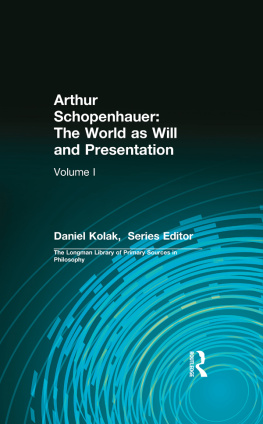PREFACE.
The greater part of the subject-matter of this volume was originally given as a lecture to the officers at the U. S. Infantry and Cavalry School. The kindly reception accorded to the lecture has encouraged me to revise and amplify it, and to publish it in its present form.
As to the narrative portion of the book, no other claim is made than that it is based upon the story of the campaign as given in the Prussian Official History of the Campaign of 1866, Hoziers Seven Weeks War, Derrcagaixs La Guerre Moderne, and Adams Great Campaigns in Europe. I have not deemed it necessary to cumber the pages with notes of reference, but will here express my indebtedness to the works mentioned, giving precedence to them in the order named. Other works have been consulted, which are enumerated in the bibliographical note at the end of the volume. I have also personally visited the scene of the operations described, and, especially in regard to the topography of the battle field of Kniggrtz, I am able to speak from my own observation.
My object has been: 1. To give a brief, but accurate, historical sketch of a great campaign, to which but little attention has been given in this country. 2. To make a comparison of some of the military features of the War of Secession with corresponding features of the European war which occurred one year later.
European critics have generally been loth to acknowledge the military excellence displayed during the War of Secession; and, even when giving full credit for the valor exhibited by our soldiers, have too often regarded our veteran armies as mere armed mobs. Chesney, Adams, Trench and Maude have recognized the value of the lessons taught by the American armies, and Lord Wolseley has recently developed an appreciation of such American generalship and soldierly worth as he can see through Confederate spectacles. But European military writers generally, and those of the Continent especially, still fail to recognize in the developments of our war the germ, if not the prototype, of military features which are regarded as new in Europe. The remarks of Colonel Chesney still hold true: There is a disposition to regard the American generals, and the troops they led, as altogether inferior to regular soldiers. This prejudice was born out of the blunders and want of coherence exhibited by undisciplined volunteers at the outsetfaults amply atoned for by the stubborn courage displayed by both sides throughout the rest of the struggle; while, if a mans claims to be regarded as a veteran are to be measured by the amount of actual fighting he has gone through, the most seasoned soldiers of Europe are but as conscripts compared with the survivors of that conflict. The conditions of war on a grand scale were illustrated to the full as much in the contest in America, as in those more recently waged on the Continent.
But it is not only among European critics that the military excellence displayed by our armies has been depreciated. There is a small class among the professional soldiers in our own country, who are wont to bestow all possible admiration upon the military operations in recent European wars, not because they were excellent, but because they were European; and to belittle the operations in our own war, not because they were not excellent, but because they were American. To this small class, whose humility in regard to our national achievements is rarely combined with individual modesty, this book is not addressed. It is to the true American soldier that this little volume is offered, with the hope that the views expressed may meet with his approval and be sanctioned by his judgment.
A. L. W.
THE CAMPAIGN OF KNIGGRTZ.
THE MILITARY STRENGTH OF THE OPPOSING NATIONS.
The German war of 1866, generally known as the Seven Weeks War, presents many features of interest to the student, the statesman and the soldier. It closed a strife of centuries between opposing nations and antagonistic political ideas. It resulted in the formation of the North German Confederation, and thus planted the seeds of a nation, which germinated four years later, during the bloody war with France. It banished Austria from all participation in the affairs of Germany, expelled her from Italy, and deflected her policy thenceforth towards the east and south. It demonstrated that preparation for war is a more potent factor than mere numbers in computing the strength of a nation; and it gave an illustration on a grand scale of the new conditions of war resulting from the use of the telegraph, the railroad and breech-loading firearms.
It is not the intention here to consider any but the military features of the great Germanic contest. Beginning the subject at the period when the quarrel between Austria and Prussia over the provinces that they had wrested from Denmark, passed from the tortuous paths of diplomacy to the direct road of war, we will consider the relative strength of the combatant nations.
As the advocate of the admission of Schleswig-Holstein as a sovereign state in the Germanic Confederation, Austria gained first the sympathy, and then the active alliance, of Bavaria, Hanover, Saxony, Hesse-Cassel, Wrtemberg, Baden, Hesse-Darmstadt and Nassau. Prussia aimed at the incorporation of the duchies within her own territory; and, though loudly championing the cause of German unity, her course was so manifestly inspired by designs for her own aggrandizement, that she could count on the support of only a few petty duchies, whose aggregate military strength did not exceed 28,000 men. As an offset to Austrias formidable German allies, Prussia had concluded an offensive and defensive alliance with Italy, whose army, though new and inferior in organization, armament and equipment, to that of her antagonist, might be relied upon to contain at least three Austrian army corps in Venetia. The main struggle was certain to be between the two great Germanic nations.
At a first glance Prussia would seem to be almost hopelessly overmatched in her contest with Austria. The latter nation possessed an area more than twice as great as the former, and in contrast with the Prussian population of less than 20,000,000, it could show an aggregate of 35,000,000 people. But a more careful examination discloses the great superiority of the Prussian kingdom. The population of Prussia was almost exclusively German; that of Austria was a heterogeneous aggregation of Germans, Czechs, Magyars, Poles, Croats and Italians, bound together in a purely artificial nationality. The Austrian national debt amounted to nearly $1,550,000,000; the annual expenditures so far exceeded the revenue as to cause a yearly deficit of more than $16,000,000, and the nation was threatened with bankruptcy. On the other hand, the Prussian national debt was only $210,000,000, the revenue exceeded the expenditures, and the finances were in a healthy condition. But the great superiority of the northern kingdom over its opponent lay in the organization, armament, equipment and











